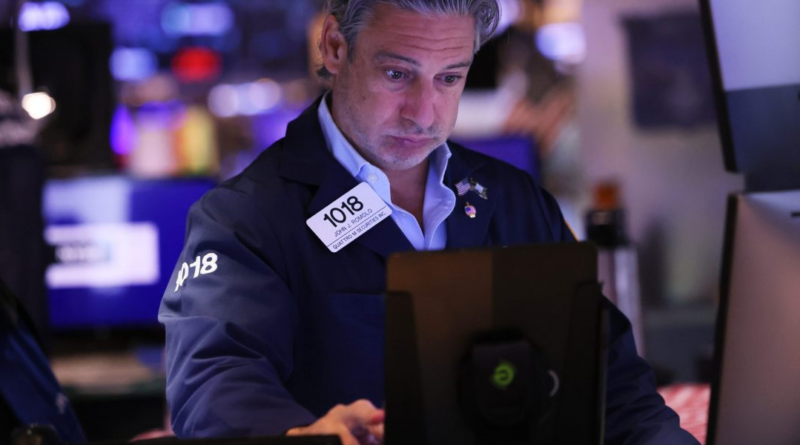Big part of stock market unconvinced economy is going anywhere: ‘Weakness underneath the hood’
Look past the exuberance for all things artificial intelligence and you find a stock market backdrop where confidence in American growth is far less robust than it seems.
It’s in the dispiriting performance of banks and industrial companies, barely eking out gains in 2023 while the likes of Tesla Inc. and Nvidia Corp. double and triple. Pessimism is visible in versions of major benchmarks that pare down the influence of megacaps, such as the equal-weight S&P 500, up a relatively paltry 4% so far this year.
Also alarming is the performance of small-cap stocks, whose charts show worrying signals barely seen over the past two decades. The Russell 2000 has fallen behind an index of the 1000 largest-capitalization stocks for the second month in a row, on track for its second-worst annual underperformance since 1998.
While this year’s top-heavy stock advance is usually framed as a depiction of the tech sector’s all-consuming strength, it has another, less sanguine interpretation. Beyond a small corps of AI winners, big swaths of the market remain unconvinced the economy is going anywhere.
“There are still cracks underneath the surface of the market — from financials, broader small-cap underperformance, you’re not seeing the breadth,” said Matt Miskin, co-chief investment strategist at John Hancock Investment Management. “Frankly, it looks more like a bunch of churning within the market with the top players doing the best and relative weakness underneath the hood.”
All this recalls the small-cap underperformance of 2021 but runs counter to what many analysts might have expected: Historically, these stocks have led during periods of recoveries and sold off in times of stress. Investors look to them for cues on the health of the economy given that they generate most of their sales within the US. This time, even as confidence among forecasters has grown that the Federal Reserve will engineer a soft landing, the view is far from unanimous in the market’s underbelly.
The S&P 500 lost 0.2% this week, while the Nasdaq 100 fell 0.5%. The Russell 2000, meanwhile, shed 0.2%.
Many smaller firms haven’t been participating on the upside as the broader market, held up by the tech giants, has rallied. Charles Schwab & Co.’s Liz Ann Sonders points out that it’s been 11 months since the S&P 500’s October low and yet only about 40% of Russell 2000 members are trading above their 200-day moving averages. That compares with more than 90% having crossed the threshold over the same stretch when the market was coming off its 2020 trough, she said.
While many economic indicators have come in strong, a measure of inflation ran at a faster-than-expected monthly pace in August. Economists surveyed by Bloomberg News see the Fed penciling in one more interest-rate hike this year and staying there for longer than previously expected.
At the same time some forecasters are reassessing their economic projections — and even recession calls — after a slew of stronger-than-expected reports from consumer spending to residential investment showed renewed momentum in recent months.
One of those is Goldman Sachs Group Inc., which lowered its 12-month recession odds by 5 percentage points to 15%. The Fed Bank of Atlanta’s GDPNow model — a real-time compilation of economic reports that evolves as data is released — has softened slightly, suggesting US gross domestic product will expand 4.94% in the third quarter. That’s down from a projection of 5.57% the prior week.
“The stock market is sniffing out something in the future that the data is not showing us right now. Remember, most of the data, like the retail sales, is backward-looking. The stock market is forward-looking,” said Matt Maley, chief market strategist at Miller Tabak + Co. “With interest rates at 15-year highs and the student-loan forgiveness ending in a couple of weeks, it’s starting to look like the consumer will not be providing the kind of tailwinds they have for most of this year.”
Read more: The Mighty American Consumer Is About to Hit a Wall: MLIV Pulse
Over at Bank of America Corp., strategists led by Michael Hartnett are telling defensively minded clients to scoop up assets, like regional banks and small caps, that have priced in a rapid decline in economic growth.
“Investors should be long assets that have discounted ‘hard landing,’ as they have less to lose in recession and if no recession big upside,” he wrote in a note.
— With assistance by Augusta Saraiva and Kyungjin Yoo


